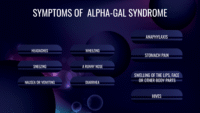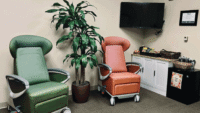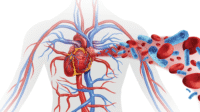Nurse-Led weaning is a meaningful evidence-based direction for weaning as opposed to traditional physician-led weaning programs. Our evidence-based project addresses the issue of mechanical ventilation weaning protocols, particularly focusing on the comparison between physician-led and nurse-led approaches. Mechanical ventilation is a critical intervention when used in the ICU setting to support patients with compromised respiratory function. However, navigating the weaning process is intricate but nurse-led weaning protocols have emerged as a potential solution to improve patient outcomes during the weaning process. Addressing this issue is important because it aims to enhance patient safety, expedite recovery, and optimize outcomes for individuals requiring mechanical ventilation, as well as address a critical gap in current practices.
Review of the Literature
Our review of the literature delineates the pivotal aspects of our study, focusing on the Adult Intensive Care Unit (ICU), specifically examining mechanical ventilation liberation and nurse-led weaning interventions. To maintain precision, we excluded pediatric populations and non-critical care units, allowing for a targeted analysis of our subject matter. A substantial portion of the literature reviews scrutinized the complication rates associated with mechanical ventilation, alongside the observed reductions in complications attributed to nurse-led mechanical ventilation weaning strategies (Sandur & Stoller, 1999). Numerous research efforts underscore both the complexity of the issue and the critical role nurses play in its management (Hirzallah, et al., 2019). Studies have delineated the risks associated with prolonged mechanical ventilation, including ventilator-associated complications, increased healthcare costs, and heightened mortality rates (Loss, et al., 2015). Conversely, evidence illuminates the benefits of nurse-led weaning protocols, showcasing reduced ventilator duration, enhanced patient comfort, and expedited recovery (Danckers, et al., 2013).
Recommended Intervention
Evidence strongly supports the implementation of nurse-led weaning protocols to improve patient outcomes and optimize mechanical ventilation. By designating trained critical care nurses to conduct regular assessments of patients’ readiness for weaning, addressing individualized patient needs, and implementing standardized criteria for assessing readiness, we can ensure a more efficient and effective weaning process. Ongoing education for nurses on evidence-based practices in mechanical ventilation weaning is essential to keep staff up to date with the latest protocols. Communication and collaboration among nurses, respiratory therapists, and physicians are vital to guarantee a cohesive approach to the weaning process. Establishing a systematic approach for continuous monitoring and evaluation of patients undergoing weaning, with regular reassessment of readiness criteria, will further enhance patient outcomes. Practice changes including adopting these evidence-based recommendations could lead to improved patient care and outcomes. Though challenges exist in the areas of implementation and measurement, a proactive approach in addressing challenges would guide recommended change.
Suggestions for Further Study
This evidence-based project conducted a systematic review to evaluate the potential efficacy of nurse-led weaning interventions in mechanical ventilation. Findings from this project strongly support the effectiveness of these strategies in reducing the duration of weaning and improving patient outcomes. Despite heterogeneity among studies, the evidence underscores the pivotal role of nurses in facilitating successful transitions from mechanical ventilation, leading to higher weaning success rates, reduced complications, and improved outcomes. However, the study also highlights the need for further research to clarify specific nurse-led interventions and refine protocols, considering the potential influence of a hospital environment on outcomes. Overall, the research reviewed and our work on this project provide valuable insights into the relevance of nurse-led extubation protocols in critical care settings and calls for continued investigation to optimize patient care and well-being.
Brief biography for authors/contributors:


The poster was presented in March 2024 – presentation details: Barnard, D., Boyd, L., Carter, B., Lukawski, C. & Fisher, M.J. (2024). A Breath of Freedom: Innovative Nursing Approaches to Mechanical Ventilation Liberation – Evidence-Based Practice Project. Partners in Quality conference. OU Health, Veterans Administration, Sigma Theta Tau International, and the Fran and Earl Ziegler College of Nursing OUHSC. Oklahoma City, Oklahoma. March 13, 2024.
References
Awang, S., Alias, N., DeWitt, D., & Azhar Jamaludin, K. (2021). Design of a clinical practice guideline in nurse-led ventilator-weaning for nursing training. Frontiers in Public Health. https://pubmed.ncbi.nlm.nih.gov/34869147/
Blackwood, B., Alderdice, F., Burns, K., Cardwell, C., Lavery, G., & O’Halloran, P. (2011, January 13). Use of weaning protocols for reducing duration of mechanical ventilation in critically ill adult patients: Cochrane systematic review and meta-analysis. The BMJ. https://www.bmj.com/content/342/bmj.c7237
Burns, K. E., Lellouche, F., Nisenbaum, R., Lessard, M. R., & Friedrich, J. O. (2014, September 9). Automated weaning and SBT systems versus non‐automated weaning strategies for weaning time in invasively ventilated critically ill adults – burns, kea – 2014: Cochrane Library. Cochrane Database of Systematic Reviews. https://www.cochranelibrary.com/cdsr/doi/10.1002/14651858.CD008638.pub2/information
Danckers, M., Grosu, H., Jean, R., Cruz, R. B., Fidellaga, A., Han, Q., Awerbuch, E., Jadhav, N., Rose, K., & Khouli, H. (2013). Nurse-driven, protocol-directed weaning from mechanical ventilation improves clinical outcomes and is well accepted by Intensive Care Unit Physicians. Journal of Critical Care, 28(4), 433–441. https://doi.org/10.1016/j.jcrc.2012.10.012
Hirzallah, F. M., Alkaissi, A., & do Céu Barbieri‐Figueiredo, M. (2019). A systematic review of nurse‐led weaning protocol for mechanically ventilated adult patients. Nursing in Critical Care, 24(2), 89–96. https://doi.org/10.1111/nicc.12404
Loss, S. H., de Oliveira, R. P., Maccari, J. G., Savi, A., Boniatti, M. M., Hetzel, M. P., Dallegrave, D. M., Balzano, P. de C., Oliveira, E. S., Höher, J. A., Torelly, A. P., & Teixeira, C. (2015). The reality of patients requiring prolonged mechanical ventilation: A multicenter study. Revista Brasileira de Terapia Intensiva (English translated version). https://www.ncbi.nlm.nih.gov/pmc/articles/PMC4396894/
Roh, J. H., Synn, A., Lim, C.-M., Suh, H. J., Hong, S.-B., Huh, J. W., & Koh, Y. (2012). A weaning protocol administered by critical care nurses for the weaning of patients from mechanical ventilation. Journal of Critical Care, 27(6), 549–555. https://doi.org/10.1016/j.jcrc.2011.11.008
Sandur, S., & Stoller, J. K. (1999). Pulmonary complications of mechanical ventilation. Clinics in Chest Medicine, 20(2), 223–247. https://doi.org/10.1016/s0272-5231(05)70139-8






















